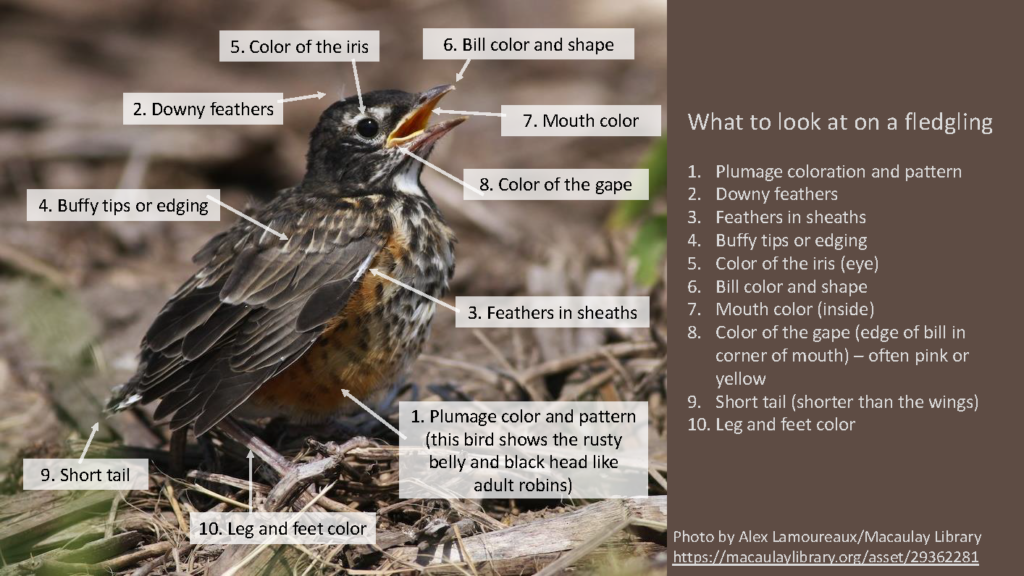It’s baby bird season!
To help you identify all those scraggly young birds, we put together a new guide to help you identify fledglings.
The guide features the top 20 reported species from the second atlas. These are the most common fledglings you are likely to encounter anywhere in the state:
- Mourning Dove
- Downy Woodpecker
- Northern Flicker
- Eastern Phoebe
- Red-eyed Vireo
- Blue Jay
- American Crow
- Black-capped Chickadee
- Tree Swallow
- Barn Swallow
- Gray Catbird
- American Robin
- Cedar Waxwing
- American Goldfinch
- Chipping Sparrow
- Song Sparrow
- Red-winged Blackbird
- Common Grackle
- Common Yellowthroat
- Yellow Warbler
You’ll also learn how to recognize a recently fledged young. It’s tempting to call any young bird recently fledged (the FL code) but you want to make sure it hasn’t moved far from it’s original nest site (i.e., that it is in the same atlas block where it hatched). Look for signs like downy feathers, a pink or yellow gape, feathers in sheaths, and stubby tails.
Not sure what a gape is or what a sheathed feather looks like? Check out the diagram at the front of the guide!
Fledglings spend lots of time begging (and shaking their wings as they do so), so listen for their calls to locate them. If you don’t know at first what species it is (some of them look nothing like their parents), hang out and see who comes to feed. If you are really inspired, you can start learning the calls of young birds. The Macaulay Library, Merlin, and xeno-canto can help you get started.
Young birds are not very adept at flying, especially the landing part, so they can be quite entertaining to watch. But be careful, the adults are likely to get really agitated if you get too close!

